
Lara State is one of the 23 states of Venezuela. Lara is located in the Central-Western Region, Venezuela. The state capital is Barquisimeto.
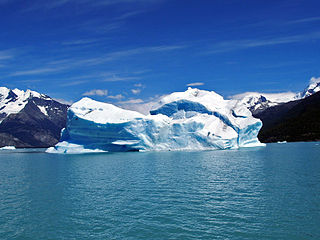
Los Glaciares National Park is a federal protected area in Santa Cruz Province, Argentina.

Alto Paraguay is the least populous as well as a sparsely populated department of Paraguay. The capital is the town of Fuerte Olimpo.

Manu National Park is a national park and biosphere reserve located in the regions of Madre de Dios and Cusco in Peru. It protects a diverse number of ecosystems including lowland rainforests, cloud forests and Andean grasslands.

Cerros de Amotape National Park is a protected area located in the regions of Piura and Tumbes in northern Peru.

The El Rey National Park is a national park of Argentina, located in the Anta Department, province of Salta, in the Argentine Northwest, 80 km from the provincial capital. It has an area of 441.62 km2.

Kalanchoe daigremontiana, formerly known as Bryophyllum daigremontianum and commonly called mother of thousands, alligator plant or Mexican hat plant, is a succulent plant native to Madagascar. Like other members of Bryophyllum, it can propagate vegetatively from plantlets that develop on its leaf margins, as well as through upshoots from lateral roots, and seeds. All parts of this species contain a very toxic steroid known as daigremontianin.
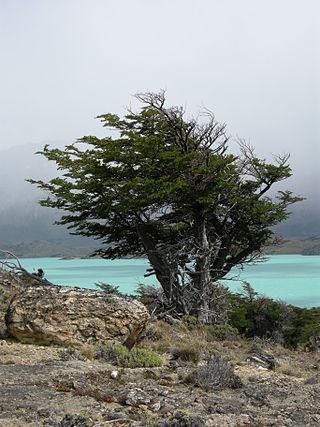
Perito Moreno National Park is a national park in Argentina. It is located in the western region of Santa Cruz Province on the border with Chile. It has an area of 126,830 hectares of mountains and valleys at a height of 900 metres above sea level.

The Sierra de las Quijadas National Park is a national park located in the northwestern part of the Argentine province of San Luis. It was established on December 10, 1991, to protect the natural features, representative of the Semiarid Chaco and the High Monte ecoregions.
The Tamá National Natural Park is a national park located in the Tamá Massif of the Andean Region of Colombia, between the municipalities Toledo and Herrán, in the department of Norte de Santander, in the northeastern part of the Eastern Ranges of the Colombian Andes. One of the main attractions of the park is a 820-metre-high (2,690 ft) waterfall, one of the world's highest.

Laguna de la Restinga is a national park on the Isla Margarita, Nueva Esparta state, Venezuela. The main part of the park is a large salt lagoon, rich in fish and birdlife. It is on the Ramsar list of wetlands of international importance, and is classified as an Important Bird Area.
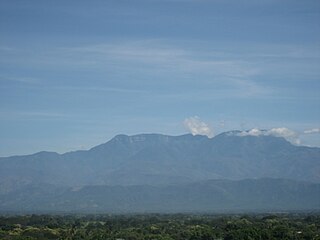
Sierra de Perijá National Park, also known as Perijá National Park is a protected area in western Venezuela, in the Serranía de Perijá mountains, on the border with Colombia. The national park, located southwest of Zulia state and Lake Maracaibo, was established in 1978 with the objective of protecting the biodiversity of the hilly regions.
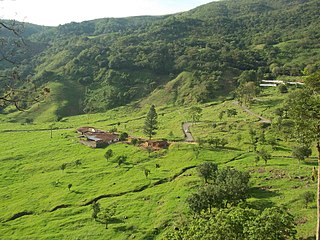
The Chorro El Indio National Park Is a national park of Venezuela located to the east of San Cristóbal, Táchira State, in the mountain range the Maravilla, has access by the highway San Cristóbal - Macanillo - Potosí.

The El Tamá National Park It is a protected area with the status of a national park that is located between the Andes and plains of Venezuela. It protects part of the Tamá Massif. It has an area of 139,000 hectares and is located in the states of Táchira and Apure, near the border with Colombia. Created as a National Park on December 12, 1978, by the then President Carlos Andrés Pérez.

The Península de Paria National Park, or Peninsula of Paria National Park, Is a national park on Paria Peninsula in Venezuela.
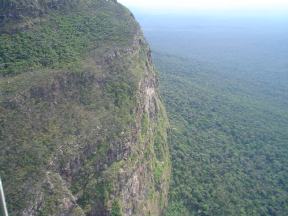
The Yapacana National Park Also Cerro Yapacana National Park Is a protected area with the status of national park in the South American country of Venezuela which was formed on December 12, 1978 by executive decree of President Carlos Andres Perez. It is located southwest of the confluence of the Ventuari River on the Orinoco River, in the jurisdiction of the Atabapo municipality of Amazonas state.

The Cerro El Copey National Park Also Cerro El Copey-Jóvito Villalba National Park Is a protected area with the status of a national park located to the east of the Caribbean island of Margarita, in the highest mountainous region of Nueva Esparta State in Venezuela. It was created in 1974 with the purpose of protecting an outstanding physiographic feature with an ecosystem that includes several plant formations, high levels of endemism and the only permanent water sources of the island.

The Laguna de Tacarigua National Park, also known as Tacarigua Lagoon National Park, is a protected area with the status of a national park located east of Miranda State, close to the town of Laguna de Tacarigua in the South American country of Venezuela. It comprises a permanent coastal lagoon of 7800 ha and 1.2 m of average depth, separated from the sea by a restinga or coastal barrier of 28.8 km long and 300–1000 m wide that was formed by the action of the sea current which runs along the coast in an East-West direction.

The Tamá Massif is a group of mountains on the border between Colombia and Venezuela to the south of Lake Maracaibo. It contains evergreen rainforest and cloud forest at the lower levels, and páramos at the highest levels.

The Caura National Park is a protected area with the status of National Park in Venezuela. With an area of 7,534,000 ha. (75,340 km2) it is the largest park in the country and the most recently created (2017).




















